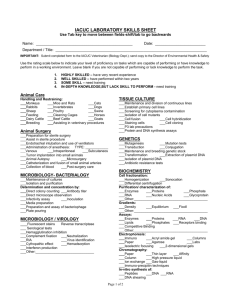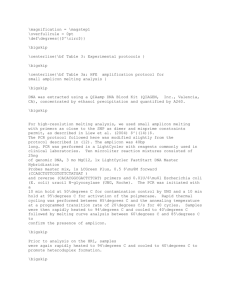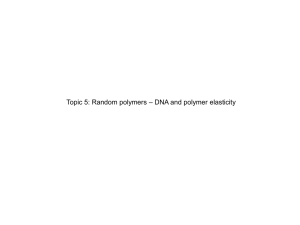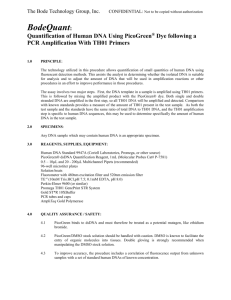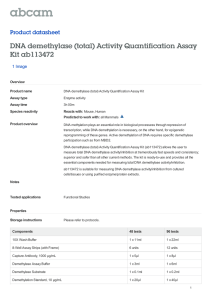Quantitative real-time PCR assays
advertisement
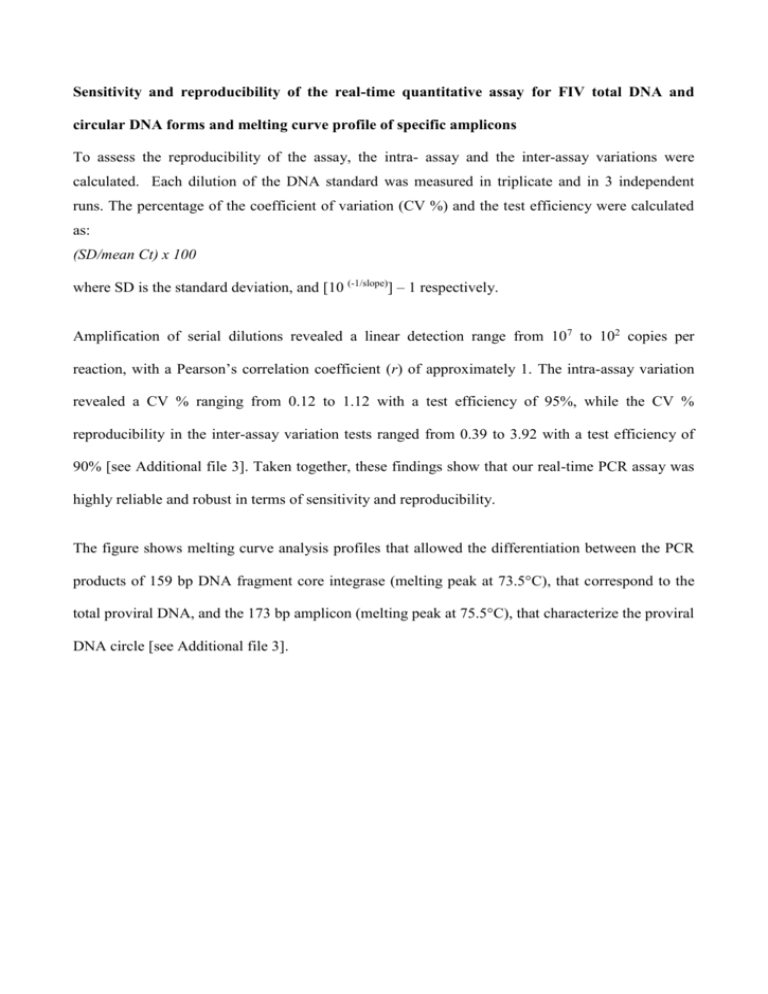
Sensitivity and reproducibility of the real-time quantitative assay for FIV total DNA and circular DNA forms and melting curve profile of specific amplicons To assess the reproducibility of the assay, the intra- assay and the inter-assay variations were calculated. Each dilution of the DNA standard was measured in triplicate and in 3 independent runs. The percentage of the coefficient of variation (CV %) and the test efficiency were calculated as: (SD/mean Ct) x 100 where SD is the standard deviation, and [10 (-1/slope)] – 1 respectively. Amplification of serial dilutions revealed a linear detection range from 107 to 102 copies per reaction, with a Pearson’s correlation coefficient (r) of approximately 1. The intra-assay variation revealed a CV % ranging from 0.12 to 1.12 with a test efficiency of 95%, while the CV % reproducibility in the inter-assay variation tests ranged from 0.39 to 3.92 with a test efficiency of 90% [see Additional file 3]. Taken together, these findings show that our real-time PCR assay was highly reliable and robust in terms of sensitivity and reproducibility. The figure shows melting curve analysis profiles that allowed the differentiation between the PCR products of 159 bp DNA fragment core integrase (melting peak at 73.5°C), that correspond to the total proviral DNA, and the 173 bp amplicon (melting peak at 75.5°C), that characterize the proviral DNA circle [see Additional file 3].




